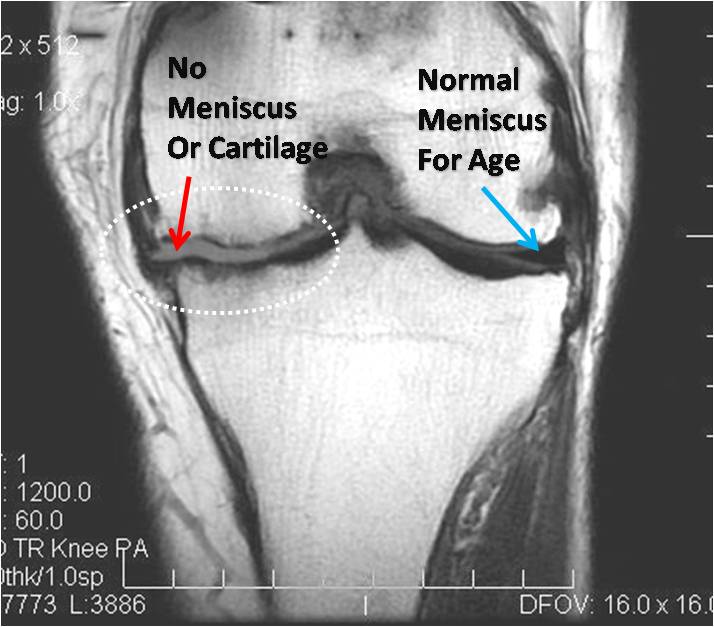More orthopedic stem cell injection, patient reported outcomes…

KJ is a 76 year old white male who first injured his left knee in 1965 with a torn meniscus. The medial meniscus was totally removed at that point. He had multiple arthroscopies, the last being in 2002. 7 years ago he was told he needed a knee replacement. On his pre-stem cell injection MRI he had significant loss of cartilage throughout his medial knee compartment and we placed him in the “FAIR” to “POOR” candidate (note the picture above-no meniscus on the left and a more normal appearing dark triangle on the right) . Despite our pessimistic candidacy rating, he proceeded with an injection of his own culture expanded stem cells into that left knee. His is now about 9 months out from his first injection. Here are his comments:
“FYI, my left knee (the bad one) is coming along wonderfully well; it is actually better and stronger than my “good” knee! And for that I thank you again!”
This patient was treated with the Regenexx-C (cultured stem cell injections). As always, not all knee patients can expect to get this same result.
——-

If you have questions or comments about this blog post, please email us at [email protected]
NOTE: This blog post provides general information to help the reader better understand regenerative medicine, musculoskeletal health, and related subjects. All content provided in this blog, website, or any linked materials, including text, graphics, images, patient profiles, outcomes, and information, are not intended and should not be considered or used as a substitute for medical advice, diagnosis, or treatment. Please always consult with a professional and certified healthcare provider to discuss if a treatment is right for you.